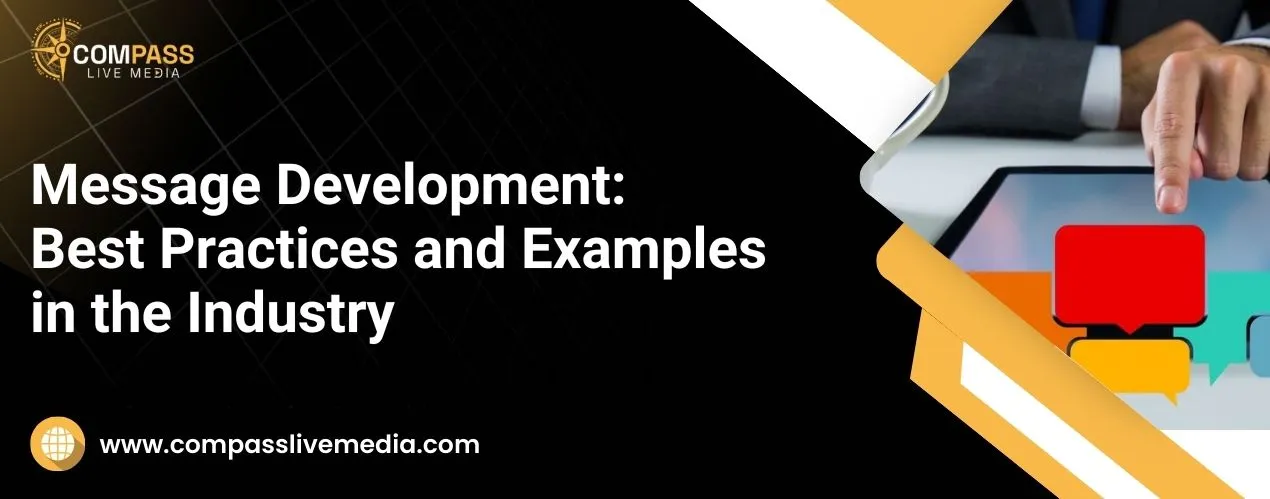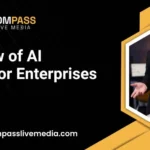Introduction
Compass Live Media is also among the top companies in the USA for message development. Message development is a useful concept for any organization that seeks to explain the right message in a strong manner to its market. When using effective best practices, businesses can create messages that inspire action from prospects. Such best practices include insights into the target market, the use of simple language, and, more importantly, a consistent communication strategy across all channels. Those examples from industry leaders include the performance of messages as positive factors influence brand image, improving consumer involvement, and delivering business outcomes. An example of this is Compass Live Media, which has achieved excellent outcomes for its clients due to specialized message development techniques.
What is message development?
Message development involves a strategic approach to developing clear and consistent messages that are relevant to your audience. It includes knowing the heart and purpose of a brand and articulating them in words that might appeal to possible consumers or shareholders. This process involves defining the main messages, developing a specific style and language, and marketing communications across all channels.
Compass Live Media is one of the best companies that operate in the USA; it focuses on the development of messages. They focus on influencer marketing agencies and they work to ensure that there is the right kind of connection with the audience. Compass Live Media handles this through influencer marketing to make sure that messages are delivered to the target audience and resonate through the influencer’s voice. The process of developing a message that covers all these areas improves brand awareness, increases trust, and increases participation. For social media campaigns, content marketing, or any public relations needs, Compass Live Media provides the quality and performance needed to achieve communication’s goals.
Being aware of advertising messaging
Brand messaging is the process of expressing and communicating the purpose and differentiation of a brand to the target audience. It includes the wording, voice, and stories that communicate what the brand represents, how it compares to others, and what’s in it for the consumer. Brand communication builds a consistent story around your brand and boosts brand advocacy.
Compass Live Media is one of the best companies in the USA that focuses on the creation of strong brand messages. They ensure that every piece of communication meets regulatory and industry requirements. It not only helps the brand maintain its reputation and integrity but also ensures that the messaging is precise, factual, and within legal compliance. Compass Live Media’s focus on creating and deploying the right brand message for a business means that the business can reach its customers in a compliance regulatory requirements.
The Importance of Message Development
A message development process is needed for any brand that aims to attain a loud, unified, and compelling market presence. It involves developing memorable messages that the target audience will know and believe to communicate the brand promise, vision, and differentiation. Proper messages are useful in branding and communication, and they also create and reinforce trust and generate participation. also capable of messaging, specifically through its best influencer marketing platform. Through sponsoring social media content by individuals who reflect a brand’s principles and target customers, the overall effect on strategy for this approach is increased reach, higher credibility, and customer loyalty.
Also Read: What is Native advertising and how it is beneficial for companies
Creating Step-by-Step Highly Profitable Messages
Identify the target audience: to know or to identify who your customers are and what their interests are.
Define key objectives: Decide the action or change that you want to achieve with your message (e.g., brand awareness, sales).
Craft a Core Message: Be able to develop a specific and well explained main message that communicates your value proposition.
Use Consistent Tone and Style: Make sure the language used is appropriate and connects with your brand.
Test and refine: Test the message with several individuals and then modify it according to their responses.
Deploy Strategically: Disseminate the message through relevant channels in order to create an impact.
7 Benefits of Developing Messaging Strategically
Clarity: It helps to clearly and quickly express the value of your brand.
Consistency: ensures that the message being projected by an organization through various modes of marketing communications is consistent.
Engagement: This is where the content has a higher hold and impresses the attention of viewers better.
Trust: Credibility builds trust with your audience, and this earns you their trust.
Differentiation: Positioning is a strategy that implies the identification of the differences that distinguish. A product from others on the market.
Efficiency: reduces duplicates in marketing strategies, which would be time consuming.
Impact: Increases the performance of marketing initiatives and leads to the improvement of marketing campaign performance and profitability.
Using tools makes creating messages quick and simple
Grammarly: It assists one in giving correct sentences without grammatical errors.
Canva creates images and layouts for your messages.
BuzzSumo is the tool that allows you to identify the most popular topics and keywords for your messages.
HubSpot Marketing Hub dictates your communication channels and supervision results.
Trello is used for process organization and working with the team members during message development.
Buffer is a social media automation that helps you schedule your posts.
Mailchimp is software that creates and controls e-mails for different segments of clients.
Most Common Questions
1. What are the guidelines for message development?
To quickly communicate, balance the information you need to convey with the audience’s needs, create engaging content that inspires action. Use plain English, avoid phrases, and verify memorable content is brief and easy to remember.
2. What is message development in advertising?
Combine writing skills and editorial judgment to develop messages for diverse audiences, choosing media channels based on target audience needs.
3. How long is a marketing message?
Major providers like HubSpot, ZeroBounce, and CampaignMonitor recommend an ideal marketing email length of 50–125 words, which is relatively short.




